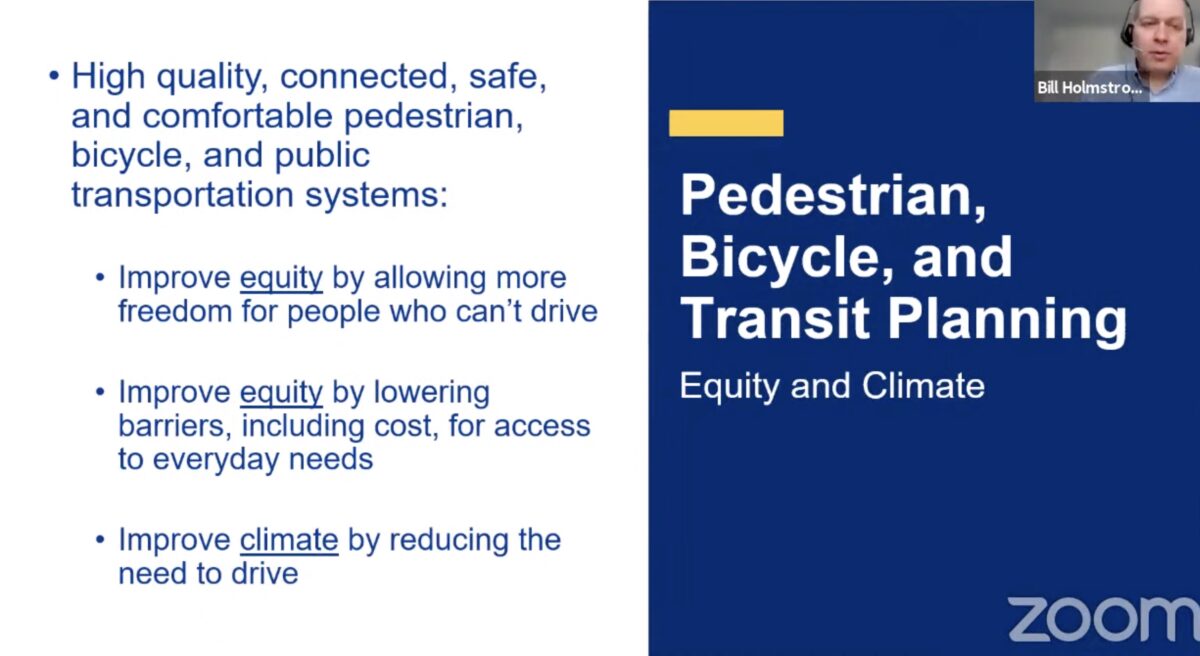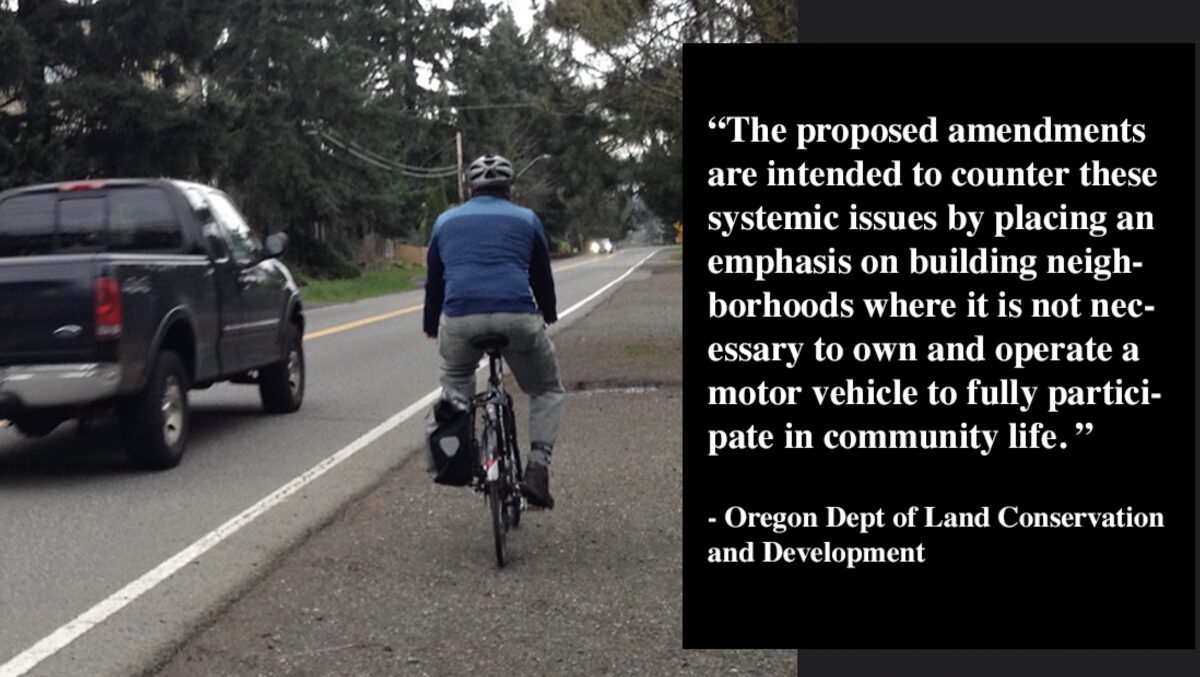Cycling News & Blog Articles
Oregon rulemaking process could usher in new era for urban planning
The reverberations of the Oregon Governor Kate Brown’s executive order on climate change, issued back in March 2020, continue to be felt.
For just over one year now, staff at the Oregon Department of Land Conservation and Development (DLCD) and an advisory committee have been working to fulfill Brown’s edict with a vast overhaul of rules that will update the state’s planning requirements. With a belief that, “Urgent and aggressive action is needed,” the Climate-Friendly and Equitable Communities Rulemaking (CFEC) process would set expectations and guide outcomes of those plans so they meet Oregon’s greenhouse gas emission reduction goals. The rulemaking would apply to Oregon’s eight largest urban areas with populations over 50,000 people (Albany, Bend, Corvallis, Eugene/Springfield, Grants Pass, Medford/Ashland, Portland Metro, Salem/Keizer).
“The end goal is to transform Oregon’s communities to be safe, equitable, sociable, and pleasant places where driving is not required, and the amount of driving is reduced,” wrote the DLCD project leads in a summary to the amendments sent to the rulemaking advisory committee on October 22nd.
What’s notable about this effort is the scope and detail of the proposed changes and how they directly address things like bicycle planning, housing development, parking reform, and more. The draft transportation planning rule amendment (full version in this PDF) is about 100 pages long and full of specifics. DLCD staff and planners leading this effort (one of whom, Evan Manvel, just happens to be a former executive director of the state’s largest bicycle advocacy nonprofit) make a direct connection between the need to reduce emissions and the need to do a bunch of the stuff activists have been pushing for for years.
Advertisement

Slide shared by DLCD rulemaking process lead Bill Holmstrom at an advisory committee meeting in September.
DLCD has clearly realized that current local land use and transportation plans are much too weak and have no chance of meeting Oregon’s emission reduction targets without dramatic changes. Their new rules aim to hasten those changes and are based on overarching principles of building new developments in proximity to existing destinations and services, shifting investment toward walking, biking and transit, disinvesting from “motor vehicle mobility” and meeting needs of historically underserved people.
As an example of how robust these changes would be, the existing transportation planning rules for Oregon are relatively curt when it comes to bicycle planning. They basically just require local governments to include bicycling in their Transportation System Plans. But the amendments include an entire bicycle planning section that’s significantly expanded and strengthened, and separated out into its own set of rules.
The new bicycle planning rules (in chapter six) require governments to plan for a complete “bicycle system”. They also must provide an inventory of the projects required to build out that system, a list of gaps and deficiencies, data on crashes and risk assessment, and more. There’s also a requirement to increase physical separation of bikeways as the speed and volume of vehicles increases. The new rules even go so far as calling for, “a connected network of bicycle facilities that provides a safe and comfortable experience for people of all ages and abilities.”
In a meeting of the rulemaking advisory committee last month, CFEC process lead staff Bill Holmstrom said, “The one little paint stripe along an arterial in most places isn’t going to cut it anymore.”
The old rules had only one mention of “bicycle parking” and said cities only had to require it at multi-family dwellings, commercial buildings, and transit centers. The new rules have an entire section on bike parking which goes into detail about the amount and type required. It calls for covered and secure parking, a minimum of one bike space for each residential unit and even calls for a minimum level of electric bike/micromobility device charging outlets.
And these are just the bicycle provisions! The new rules on car parking reform are equally intriguing and potentially transformative. They call for parking maximums, new ground-floor uses for parking garages, and more.
It’s a breath of fresh air to see State of Oregon employees so clearly and confidently make these important connections and have the words and policies to back up the rhetoric.
If all goes according to plan the Land Conservation and Development Commission (LCDC, not to be confused with the DLCD) will adopt the new rules later this winter, with subsequent adoption by regional agencies in the eight metro areas by spring of 2022.
Learn more about this effort and read the full list of proposed amendments at the CFEC rulemaking process website.
— Jonathan Maus: (503) 706-8804, @jonathan_maus on Twitter and This email address is being protected from spambots. You need JavaScript enabled to view it.
— Get our headlines delivered to your inbox.
— Support this independent community media outlet with a one-time contribution or monthly subscription.


